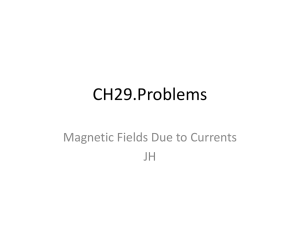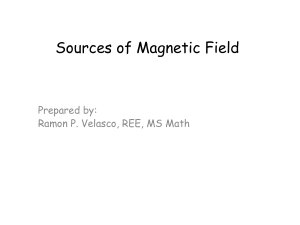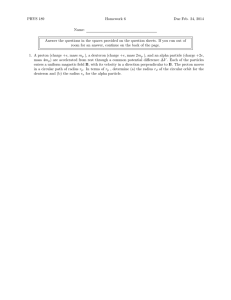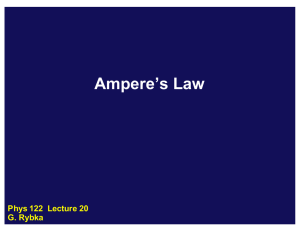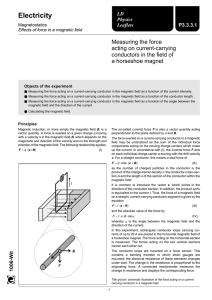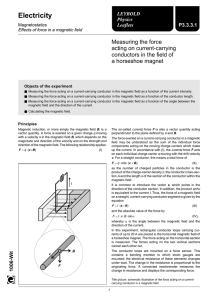Physics 42 Chapter 30 HW Set#1
advertisement
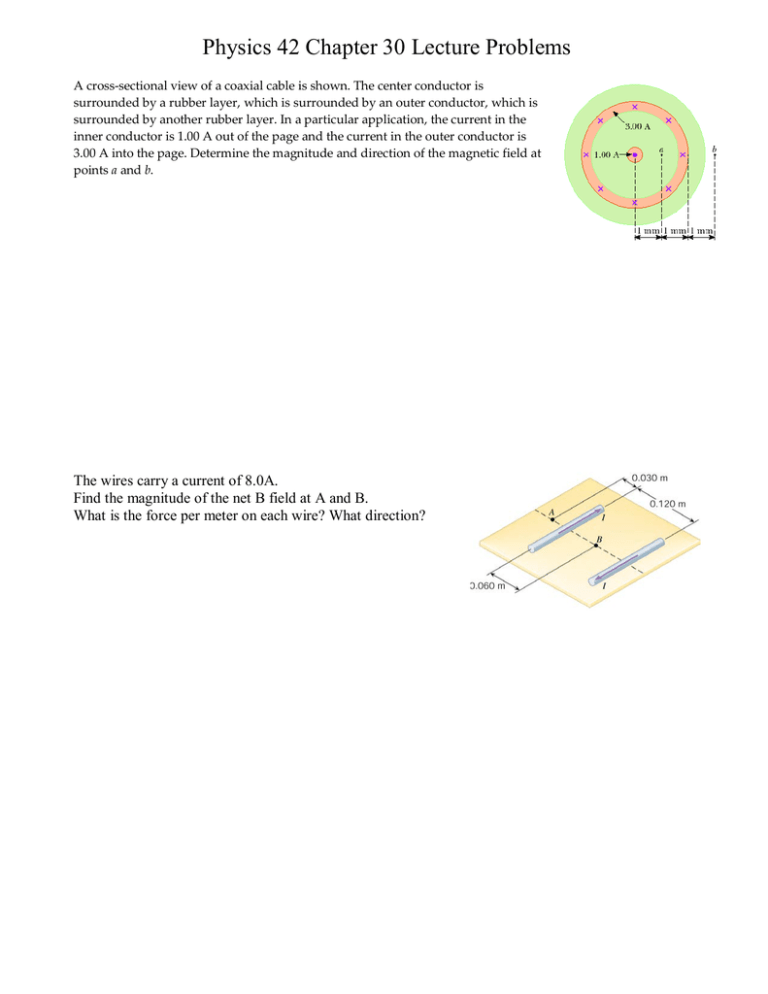
Physics 42 Chapter 30 Lecture Problems A cross-sectional view of a coaxial cable is shown. The center conductor is surrounded by a rubber layer, which is surrounded by an outer conductor, which is surrounded by another rubber layer. In a particular application, the current in the inner conductor is 1.00 A out of the page and the current in the outer conductor is 3.00 A into the page. Determine the magnitude and direction of the magnetic field at points a and b. The wires carry a current of 8.0A. Find the magnitude of the net B field at A and B. What is the force per meter on each wire? What direction? Consider the current-carrying loop shown in Figure P30.12, formed of radial lines and segments of circles whose centers are at point P. Find the magnitude and direction of B at P. A long cylindrical conductor of radius R carries a current I as shown. The current density J, however, is not uniform over the cross section of the conductor but is a function of the radius according to J = br, where b is a constant. Find an expression for the magnetic field B (a) at a distance r1 < R and (b) at a distance r2 > R, measured from the axis. What current is required in the windings of a long solenoid that has 1 000 turns uniformly distributed over a length of 0.400 m, to produce at the center of the solenoid a magnetic field of magnitude 1.00 × 10–4 T? A magnetic field of 1.30 T is to be set up in an iron-core toroid. The toroid has a mean radius of 10.0 cm, and magnetic permeability of 5 000 μ0. What current is required if the winding has 470 turns of wire? The thickness of the iron ring is small compared to 10 cm, so the field in the material is nearly uniform. In Bohr’s 1913 model of the hydrogen atom, the electron is in a circular orbit of radius 5.29 × 10–11 m and its speed is 2.19 × 106 m/s. (a) What is the magnitude of the magnetic moment due to the electron’s motion? (b) If the electron moves in a horizontal circle, counterclockwise as seen from above, what is the direction of this magnetic moment vector?




